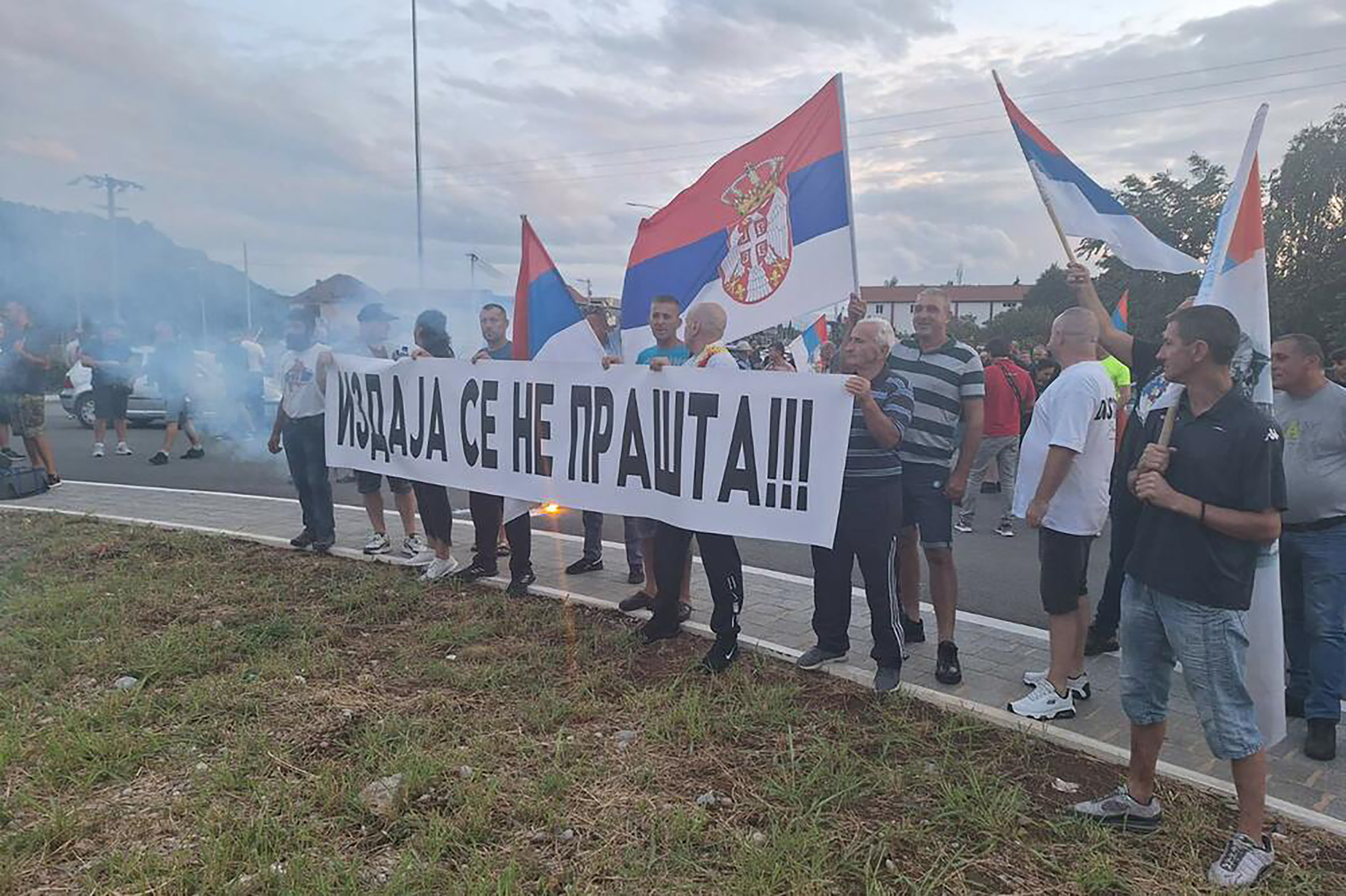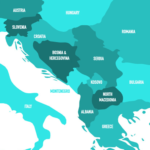On August 10, Montenegro’s President, Jakov Milatović instructed his colleague from the Europe Now Milojko Spajić to form a new government following parliamentary elections held on June 11. The question of what the new government composition will look like concerns not only the politicians and citizens of Montenegro, but the politicians in the EU, USA, NATO allies, and neighbors, as well as Serbia, Russia, and Ukraine. Everyone is concerned about how the country will move on next, whether it will continue its European integration course, whether it will remain part of NATO or return to the Russo-Serbian orbit. The concern is well founded as the person entrusted with shaping the new government gives little information about the negotiation process. Even President Milatović expressed dissatisfaction with the “lack of transparency” in the talks, where the situation is seen as “very dangerous.” In recent days, there have been some disputes between the two leaders of Europe Now regarding the government composition, which sparked critical statements on the part of the president. His concern was confirmed by unauthorized rallies and car marches on August 30, which took place in some cities under the slogans of “protecting the will of voters.” Their organizers were the leaders of the pro-Serbian bloc For the Future of Montenegro, headed by Andrej Mandic, who are furious about the fact that Spajić did not invite any representatives of this political force to become part of the new government and “does not believe in their sincerity.” In response, following in the footsteps of their predecessor, the Democratic Front, the party rallied its supporters to take to the streets under Serbian and Russian flags. Currently, not much is known about the developments, but the available reports allow us to assume the likely formats of the future government in Montenegro and to suggest several possible scenarios.
Government coalition. Spajić has stated several times that the government majority will consist of deputies from the Europe Now, the Bosniak force, and two Albanian parties, the Croatian Citizens’ Initiative, the Democrats of Montenegro, and the Socialist People’s Party. Thus, he confidently counts on the support of 43 MPs. However, it was not by chance that President Milatović expressed concern about the process of government formation and warned that the “energy” from victory in the presidential elections was being lost. It is already known that five lawmakers with Europe Now and their allies in the Assembly declared their disagreement with the proposals of the majority regarding government formation. Now it’s hard to predict their possible voting preferences. After all, if they do not change their position and return to the government coalition, then only 38 votes will remain, the same number as the opposition has. This is not enough to form a government majority.
Opposition. Representatives of the Democratic Party of Montenegro, For the Future of Montenegro (FFM), and the Public Block United Reform Action (URA) are unlikely to become part of the new government. Thus, the opposition has 38 votes, which creates certain conditions for blocking the work of both the Assembly and Government. The Democrats and For the Future of Montenegro are not capable of creating their own coalition – they are fundamentally different in terms of their agendas. The Democratic Party defends Montenegro’s independence, while the FFM is openly pro-Serbian, with some pro-Russian undertones to it. They dream of withdrawing from NATO, while the Democrats are trying to retain membership. Since the outset of Russia’s aggression against Ukraine, the Democrats clearly and unequivocally expressed their support for the Ukrainian case, backing Russia sanctions, while the FFM support Russian invaders and oppose sanctions. They seek to withdraw the recognition of Kosovo’s independence, while the Democrats support their statehood. However, a joint conditional vote with the URA against the governing coalition is a reality.
National minorities. It is unclear how deputies from national parties will behave. Indeed, Albanians, Bosniaks, and Croats promised Spajić support in exchange for certain government positions, and most likely they will receive several seats, but not the top notch ones, so to speak. For example, a vice-prime minister and minister for national minorities, or labor, or sports, several deputy ministers and heads of state agencies… But never before have representatives of national minorities been at the head of the ministries of finance, foreign affairs, defense, economy, and agriculture – as a rule, they were headed by Montenegrins. Their position in relation to the Government will be formed under the influence of two factors: how their demands will be satisfied by Spajić and whether they have any prior commitments to the long-time ally, the Democrats, and personally to former President Djukanovic.
Possible scenarios. The situation of the formation of a new government is really difficult for Europe Now, Milatović, and Spajić. A big question remains about shaping a government majority, which means an unstable power, unable to ensure the further development of the country and potential stagnation of the European integration process. This creates favorable conditions for the spread of Russian and Serbian influence in Montenegro and the independence restrictions.
So what could be the solution? What should the winners of the presidential and parliamentary elections do now? There seem to be several possible scenarios.
Option 1. Milatović and Spajić could manage to reinstate order in their party and allies and bring back those who did not support their proposals regarding the new cabinet composition. Then 43 votes in parliament are guaranteed. And then the government majority will be formed.
Option 1+. Spajić, under the pressure of the Democrats of Montenegro and certain circumstances, agrees to participate in the URA Government with four deputies in the Assembly and then there will already be 47 votes. At the same time, for an absolute two-thirds majority, 52 mandates are required for guaranteed control of the Assembly.
Option 2 (unlikely). During the election campaign, in response to a question about a possible alliance with FFM, Spajić answered “We’ll see”, which surprised and alarmed political pundits and experts. The union of the so-called “good Serbs” of Spajić and “bad Serbs” of Andrej Mandic would be disastrous for European Montenegro. But in this case, he would receive 13 additional votes, and the coalition would l already secure 56 votes, which would be a stable majority. However, it is difficult to imagine that the national parties and the Democrats of Montenegro will agree to such a scenario – they do not need a “Serbian world” at all, and neither do they need a “Russian” one.
Option 3 (practically impossible). The updated Democratic force is invited to the goverment – without Milo Djukanovic, who is seen as toxic by many Montenegrin politicians. Then the government coalition would have a constitutional majority with 64 votes. But in this case, it would be necessary to convince the president and other members of the coalition of the feasibility of such a coalition format, and to share a considerable part of the ministerial portfolios with the Democrats.
Option 4 (highly likely). Spajić will not be able to implement any of the said scenarios and will form a “technical/transitional government” that will not last too long. In this case, the president shall dissolve the parliament and call extraordinary snap elections.
It should also be noted that there is another “political force” – the Serbian Orthodox Church (for several years now it has ceased to be a spiritual force, having become an influential political player in the Western Balkans), which serves as an effective lobbying weapon of the “Serbian world” in Montenegro, with the support of its a Russian accomplice in the face of the Russian Orthodox Church. It has influence on a significant part of the population and all pro-Serbian parties, while Milatović and Spajić themselves are close to it. In addition, the SOC contributed to Milatović’s presidential election win and also helped Europe Now succeed in parliamentary elections. This can in fact be an alarming signal because debts must one day be paid. It cannot be ruled out that Montenegro’s Western partners, who do not want to lose an ally in the region and just watch Montenegro drift back into the Russian and Serbian orbit, may in some way try to influence the process of government formation and find an opportunity to help Spajić create a truly pro-Montenegro government and a patriotic coalition.



